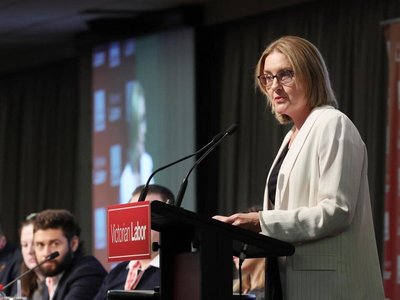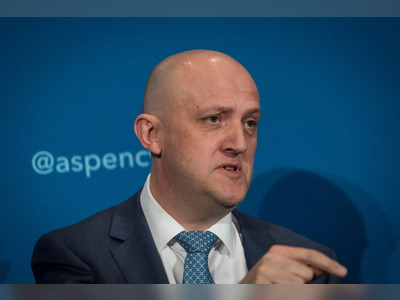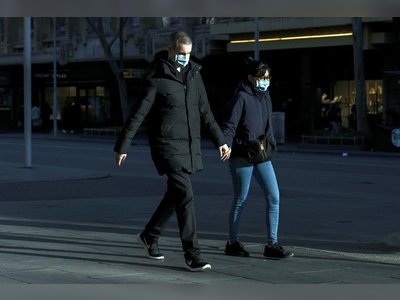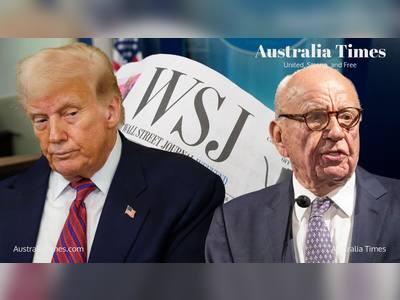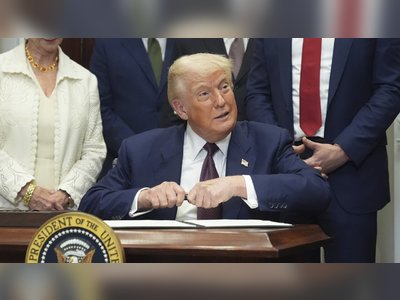Prime Minister Albanese Set for Salary Increase, Surpassing Trump
Australian PM’s remuneration rises to $622,071, overtaking US President Trump amid global salary comparisons.
Prime Minister Anthony Albanese's annual salary will increase to $622,071 beginning July 1, following a 2.4 percent pay rise approved by the Remuneration Tribunal.
This adjustment positions Albanese's salary above that of U.S. President Donald Trump, who earns a fixed salary of $400,000 (approximately $617,000), unchanged since 2001. The Tribunal assesses salary adjustments each year for federal politicians, which includes the prime minister, taking into account economic conditions and salary standards across the private and public sectors.
The increase to Albanese's salary is notably lower than the 3.5 percent rise granted by the Fair Work Commission for minimum wage earners earlier this month.
Despite being among the highest-paid leaders globally, Albanese's remuneration does not exceed that of some leaders in nearby countries.
For example, Singaporean Prime Minister Lawrence Wong receives $SG2.2 million ($2.5 million), a figure established to attract talent to public service and combat corruption, as articulated by Singapore's founding prime minister, Lee Kuan Yew.
Additionally, John Lee, the Chief Executive of Hong Kong, earns approximately $HK5.6 million ($1.1 million), surpassing Albanese's salary.
In Switzerland, the current president, Karin Keller-Sutter, receives about 459,688 Swiss francs ($877,101), placing her among the world’s highest-paid leaders.
When compared to leaders of countries with similar governance structures, Albanese's salary remains competitive.
Canadian Prime Minister Mark Carney is slated to earn about $C422,000 ($477,920), while New Zealand Prime Minister Christopher Luxon will receive $NZ510,300 ($474,000) this year.
The UK Prime Minister, Keir Starmer, is expected to receive over £174,711 ($365,334), correlating with the rise in the base MP salary to £93,904 since April.
Albanese previously acknowledged his financial advantages as Prime Minister, referencing the purchase of a $4.3 million home on the New South Wales Central Coast, though he also remarked on his past struggles with income inequality.
In Europe, leaders' salaries vary considerably; French President Emmanuel Macron earns €182,000 ($324,183), and Danish Prime Minister Mette Frederiksen's salary is 1,458,000 krone ($348,370).
Indian Prime Minister Narendra Modi's salary is approximately 2 million rupees ($35,822), while Japanese Prime Minister Shigeru Ishiba receives around ¥40.6 million ($436,450).
Albanese's compensation places him within the top one percent of Australian taxpayers, although he is not the highest-paid official in Australia.
Last year, Australian Competition and Consumer Commission chair Gina Cass-Gottlieb received total remuneration of $846,066, while Joseph Longo, chair of the Australian Securities and Investments Commission, earned $815,154.
From July, newly appointed Treasury Secretary Jenny Wilkinson is set to receive remuneration exceeding $1 million, reflecting the high compensation necessary to retain executive talent within the public service.
In response to rising salaries for senior public servants, Senator Jacqui Lambie proposed legislation to cap their pay at $430,000, highlighting concerns over compensation growth outpacing ministerial salaries.
The Tribunal noted that competitive salaries are crucial for retaining top talent, preventing a mass exit to the private sector.
This latest decision by the Remuneration Tribunal also affects the salaries of federal politicians without senior roles, raising their pay to $239,258.
Those in leadership positions, such as Treasurer Jim Chalmers and Opposition Leader Sussan Ley, will see their pay rise to $448,609 and $442,627 respectively, consistent with their responsibilities.
This adjustment positions Albanese's salary above that of U.S. President Donald Trump, who earns a fixed salary of $400,000 (approximately $617,000), unchanged since 2001. The Tribunal assesses salary adjustments each year for federal politicians, which includes the prime minister, taking into account economic conditions and salary standards across the private and public sectors.
The increase to Albanese's salary is notably lower than the 3.5 percent rise granted by the Fair Work Commission for minimum wage earners earlier this month.
Despite being among the highest-paid leaders globally, Albanese's remuneration does not exceed that of some leaders in nearby countries.
For example, Singaporean Prime Minister Lawrence Wong receives $SG2.2 million ($2.5 million), a figure established to attract talent to public service and combat corruption, as articulated by Singapore's founding prime minister, Lee Kuan Yew.
Additionally, John Lee, the Chief Executive of Hong Kong, earns approximately $HK5.6 million ($1.1 million), surpassing Albanese's salary.
In Switzerland, the current president, Karin Keller-Sutter, receives about 459,688 Swiss francs ($877,101), placing her among the world’s highest-paid leaders.
When compared to leaders of countries with similar governance structures, Albanese's salary remains competitive.
Canadian Prime Minister Mark Carney is slated to earn about $C422,000 ($477,920), while New Zealand Prime Minister Christopher Luxon will receive $NZ510,300 ($474,000) this year.
The UK Prime Minister, Keir Starmer, is expected to receive over £174,711 ($365,334), correlating with the rise in the base MP salary to £93,904 since April.
Albanese previously acknowledged his financial advantages as Prime Minister, referencing the purchase of a $4.3 million home on the New South Wales Central Coast, though he also remarked on his past struggles with income inequality.
In Europe, leaders' salaries vary considerably; French President Emmanuel Macron earns €182,000 ($324,183), and Danish Prime Minister Mette Frederiksen's salary is 1,458,000 krone ($348,370).
Indian Prime Minister Narendra Modi's salary is approximately 2 million rupees ($35,822), while Japanese Prime Minister Shigeru Ishiba receives around ¥40.6 million ($436,450).
Albanese's compensation places him within the top one percent of Australian taxpayers, although he is not the highest-paid official in Australia.
Last year, Australian Competition and Consumer Commission chair Gina Cass-Gottlieb received total remuneration of $846,066, while Joseph Longo, chair of the Australian Securities and Investments Commission, earned $815,154.
From July, newly appointed Treasury Secretary Jenny Wilkinson is set to receive remuneration exceeding $1 million, reflecting the high compensation necessary to retain executive talent within the public service.
In response to rising salaries for senior public servants, Senator Jacqui Lambie proposed legislation to cap their pay at $430,000, highlighting concerns over compensation growth outpacing ministerial salaries.
The Tribunal noted that competitive salaries are crucial for retaining top talent, preventing a mass exit to the private sector.
This latest decision by the Remuneration Tribunal also affects the salaries of federal politicians without senior roles, raising their pay to $239,258.
Those in leadership positions, such as Treasurer Jim Chalmers and Opposition Leader Sussan Ley, will see their pay rise to $448,609 and $442,627 respectively, consistent with their responsibilities.
AI Disclaimer: An advanced artificial intelligence (AI) system generated the content of this page on its own. This innovative technology conducts extensive research from a variety of reliable sources, performs rigorous fact-checking and verification, cleans up and balances biased or manipulated content, and presents a minimal factual summary that is just enough yet essential for you to function as an informed and educated citizen. Please keep in mind, however, that this system is an evolving technology, and as a result, the article may contain accidental inaccuracies or errors. We urge you to help us improve our site by reporting any inaccuracies you find using the "Contact Us" link at the bottom of this page. Your helpful feedback helps us improve our system and deliver more precise content. When you find an article of interest here, please look for the full and extensive coverage of this topic in traditional news sources, as they are written by professional journalists that we try to support, not replace. We appreciate your understanding and assistance.


